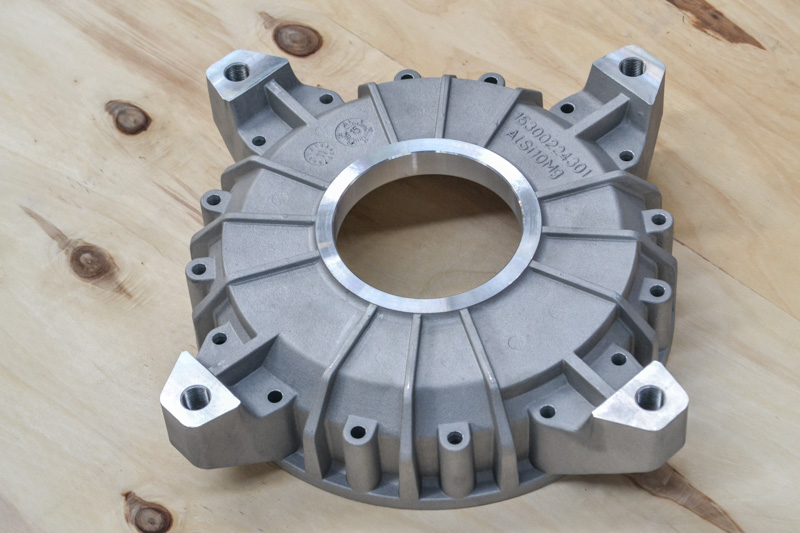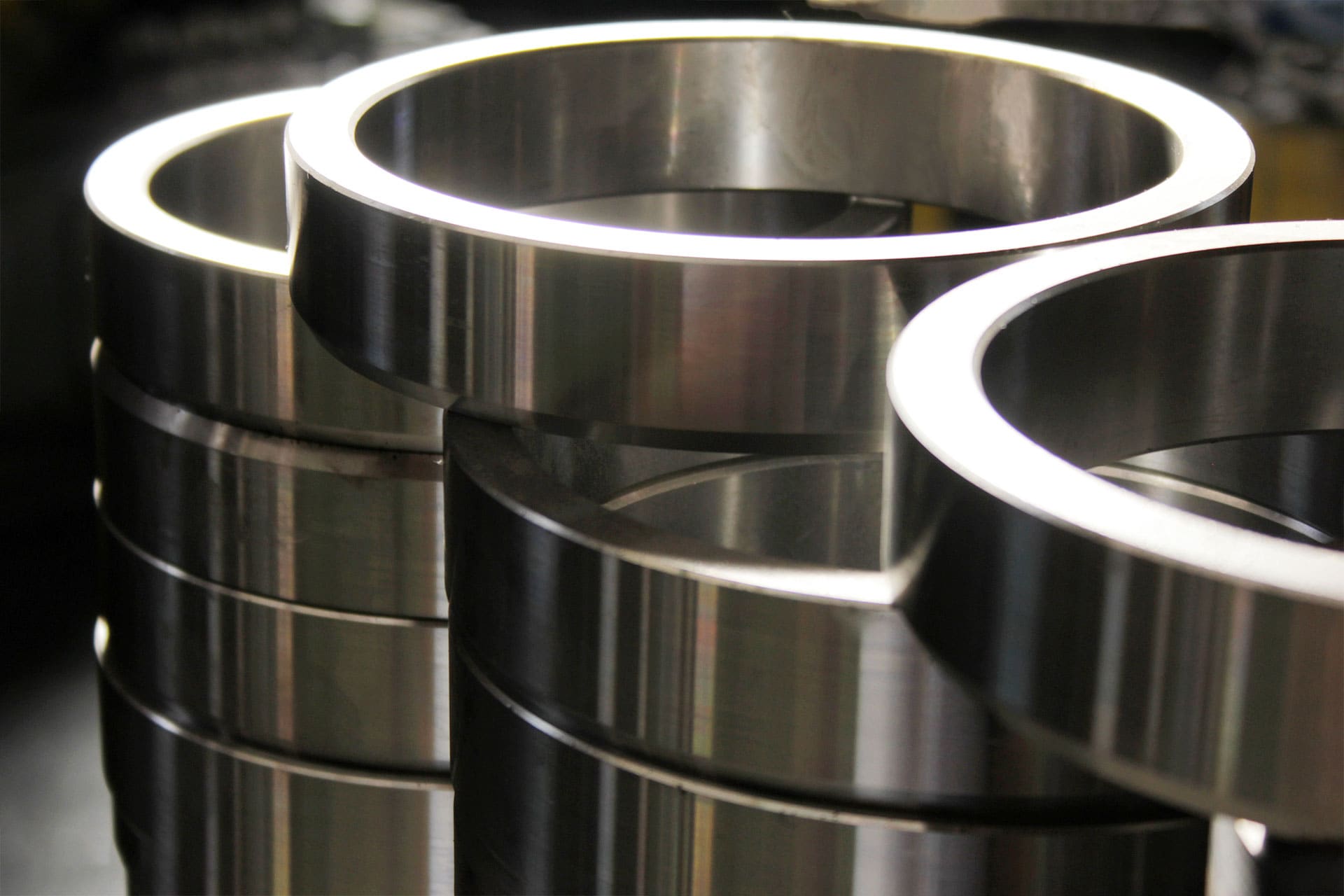Exploring the legacy of Wisconsin Aluminum Foundry in metal casting
All Regarding Light Weight Aluminum Castings: Recognizing Their Duty and Value in Manufacturing
Aluminum spreadings are important to contemporary manufacturing, using a mix of lightweight residential properties and toughness. They assist in complex designs while reducing assembly expenses. Industries such as aerospace and automotive regularly use these elements for enhanced efficiency. The manufacturing of aluminum spreadings is not without its challenges. Recognizing the nuances of this procedure reveals both the benefits and potential risks. Discovering these variables will provide deeper understandings into their expanding importance.
Review of Aluminum Spreading Processes
Aluminum casting processes play an essential function in manufacturing, providing flexibility and efficiency. These processes include pouring molten light weight aluminum right into mold and mildews to develop exact shapes and elements. Numerous methods are employed, including sand casting, pass away spreading, and investment spreading, each distinguished by its technique of mold and mildew creation and the intended application.
Sand casting uses a blend of sand and binder to form molds, enabling intricate geometries. Pass away casting, on the various other hand, involves requiring molten aluminum right into metal molds, resulting in high accuracy and smooth coatings. Investment casting, commonly made use of for intricate styles, includes creating a wax pattern coated with a ceramic shell, which is after that filled up with liquified light weight aluminum.
These casting methods deal with varied industrial demands, making light weight aluminum a favored product for components in industries such as automobile, aerospace, and consumer goods. The choice of casting technique greatly affects the end product's top quality and efficiency.
Benefits of Utilizing Aluminum Castings
The advantages of using aluminum spreadings in production are many and substantial. To begin with, aluminum's light-weight nature adds to decreased overall item weight, boosting power effectiveness in applications such as vehicle and aerospace markets. Furthermore, aluminum spreadings display outstanding rust resistance, making certain long life and resilience in harsh settings. The product's thermal and electric conductivity additionally makes it appropriate for different applications, including electronic devices and heat exchangers.
Furthermore, light weight aluminum castings can be created with elaborate layouts, enabling for a lot more complex forms that fulfill specific practical requirements. This convenience contributes to reduced setting up prices and improved layout flexibility. The spreading process itself is reliable, allowing for high-volume production with consistent top quality. Lastly, light weight aluminum is recyclable, making it an eco-friendly alternative in manufacturing. Collectively, these benefits highlight why aluminum castings are progressively preferred across varied fields, using both performance benefits and economic performance.
Typical Applications of Aluminum Castings
While different products are made use of in production, light weight aluminum spreadings stand out because of their wide array of applications throughout numerous sectors. These spreadings are extensively used in the vehicle industry for engine parts, transmission real estates, and structural parts, adding to lighter cars and enhanced fuel effectiveness. In the aerospace sector, light weight aluminum spreadings are critical for airplane elements, where weight decrease is important for performance and security.
Additionally, the electrical industry utilizes light weight aluminum castings for housings and architectural components in machinery, gaining from the material's excellent conductivity. In durable goods, aluminum castings can be discovered in items such as home appliances and showing off equipment, giving longevity and a modern-day aesthetic. The building market utilizes aluminum spreadings in architectural aspects, home window frameworks, and fixtures, showcasing their convenience and stamina. Generally, aluminum spreadings play an indispensable role in boosting item performance and efficiency across numerous industries.
Key Production Techniques for Light Weight Aluminum Castings
The manufacturing of aluminum castings counts on different methods, with sand spreading and die casting being among the most famous. Sand casting includes producing mold and mildews from sand, permitting for detailed layouts and big elements. In comparison, pass away casting uses high-pressure shot of molten light weight aluminum into recyclable molds, using precision and efficiency for automation.
Sand Casting Refine
Sand spreading stands as one of the most widely made use of approaches for producing aluminum castings, thanks to its adaptability and cost-effectiveness. This process includes developing a mold from a combination of sand and a bonding representative, typically clay. As soon as the mold is ready, liquified light weight aluminum is put right into it, enabling the steel to fill up the cavity. After cooling, the mold is damaged away to expose the casting. Sand spreading fits intricate geometries and large parts, making it ideal for different applications. Additionally, it enables very easy adjustments, enabling suppliers to adjust layouts promptly. The surface area finish may require added machining for specific applications, making sure the last item satisfies top quality standards.
Die Casting Approaches
Pass away casting stands for an extremely effective technique for creating light weight aluminum spreadings, characterized by its capacity to supply high accuracy and exceptional surface area finish. This strategy primarily includes requiring molten aluminum into a mold under high stress, ensuring that great information and detailed shapes are captured accurately. There are 2 primary die casting approaches: hot chamber and cold chamber. Hot chamber pass away casting appropriates for alloys with reduced melting points and permits faster cycles, while chilly chamber die spreading is suitable for high-temperature alloys, needing different melting systems. Both methods enhance production prices and decrease product waste, making pass away casting a recommended selection in sectors such as automotive and electronic devices, where toughness and dimensional accuracy are paramount.
Sustainability in Light Weight Aluminum Casting Production
While the demand for light weight aluminum spreadings remains to expand, manufacturers are significantly prioritizing sustainability in their production procedures. This shift is driven by the requirement to lower environmental influence and conserve all-natural sources. Many firms are adopting recycling initiatives, utilizing scrap aluminum, which notably reduces energy usage and greenhouse gas emissions compared to key light weight aluminum manufacturing. In addition, improvements in casting technologies are allowing extra efficient use of materials, lessening waste throughout the manufacturing process.
Makers are additionally exploring eco-friendly alternatives to standard spreading methods, such as 3D printing and advanced mold modern technologies, which aid optimize resource use. Wisconsin Aluminum Foundry. Additionally, applying sustainable practices in supply chain management assurances that raw products are sourced sensibly. As a result, the light weight aluminum casting industry is making strides toward an extra lasting future, aligning with worldwide environmental objectives while fulfilling the increasing demand for high-performance aluminum products
Challenges and Considerations in Aluminum Spreading
Light weight aluminum casting presents numerous difficulties that producers have to navigate to guarantee product honesty. Layout complexity can complicate the casting process, leading to possible issues and increased manufacturing time. In addition, keeping strenuous quality control standards is vital to satisfy the demands of precision and integrity in ended up parts.

Layout Intricacy Issues
Designing components for light weight aluminum casting presents various intricacies that designers need to browse to achieve optimal results. One substantial obstacle is the demand for accurate geometry; complex layouts can bring about troubles in mold and mildew development and boosted risk of flaws. Additionally, thermal properties of light weight aluminum require careful factor to consider of cooling prices, as unequal cooling can cause bending. Wall density variants likewise position a difficulty, as they can impact circulation attributes and structural stability. Engineers must stabilize layout appearances with manufacturability, making sure that attributes such as fillets and ribs are maximized for strength without complicating the spreading procedure. Factors to consider pertaining to draft angles are essential to promote mold launch, further making complex the design process. These elements collectively highlight the details entailed in aluminum spreading layout.
Quality Assurance Difficulties
Achieving high-quality light weight aluminum spreadings involves steering a variety of top quality control challenges that can substantially impact the end product. First, variations in basic material structure can lead to disparities in casting homes, making it necessary to ensure worldly quality. Second, the spreading process itself is susceptible to flaws, such as porosity and contraction, which can jeopardize architectural integrity. In addition, temperature level control during melting and pouring is crucial; variations can lead to unequal solidification, helpful site affecting dimensional accuracy. Detailed evaluation approaches, including non-destructive testing, need to be employed to determine defects early. Finally, keeping rigorous process documents and adherence to industry criteria is crucial for traceability and quality control, highlighting the complex equilibrium required to create reputable light weight aluminum spreadings in production.
Future Trends in Aluminum Spreading Technology
As suppliers strive to improve effectiveness and sustainability, technologies in aluminum casting innovation are emerging to satisfy these demands. One significant pattern is the combination of automation and expert system, which streamline manufacturing processes and boost precision in casting operations. These improvements minimize human error and maximize source use, ultimately resulting in set you back decreases.
Furthermore, the fostering of sophisticated products and alloys is improving the landscape. New formulas improve performance characteristics, such as rust resistance and lightweight residential properties, making aluminum spreadings more flexible throughout different industries.
In addition, lasting techniques are obtaining traction, with a focus on recycling and decreasing waste. Strategies such as 3D printing are additionally being explored to produce complicated geometries that were previously unattainable
Regularly Asked Concerns

Exactly How Do Aluminum Castings Contrast to Other Products?
Light weight aluminum spreadings use advantages such as light-weight, rust resistance, and outstanding thermal find out here now conductivity contrasted to various other materials. They are typically liked for applications requiring toughness and effectiveness, particularly in aerospace and vehicle sectors.
What Is the Life Expectancy of Aluminum Castings?
The lifespan of aluminum spreadings generally ranges from 10 to 50 years, depending upon environmental problems, usage, and maintenance. Their rust resistance and longevity add visibly to their lasting performance in different applications.
Can Aluminum Castings Be Recycled?
Yes, light weight aluminum castings can be reused. The recycling procedure is efficient, enabling the recuperation of aluminum without considerable loss of top quality, making it a sustainable option in manufacturing and lowering ecological impact.
What Precaution Are Needed Throughout Aluminum Casting?
Throughout aluminum spreading, necessary security actions consist of putting on appropriate individual safety tools, making certain correct ventilation, preserving tools, utilizing fire-resistant materials, and applying secure handling protocols for liquified metal to avoid mishaps and injuries.
Just How Do Temperature Modifications Impact Aluminum Castings?
Temperature level changes noticeably impact aluminum spreadings by influencing fluidity, solidification rates, and mechanical residential or commercial properties. Rapid air conditioning can lead to boosted brittleness, while gradual cooling promotes much better structural honesty and decreases the danger of issues.
Die casting, on the other hand, includes forcing liquified aluminum into metal mold and mildews, resulting in high accuracy and smooth finishes. The manufacturing of aluminum spreadings relies on different techniques, with sand casting and pass away spreading being amongst the most popular. Sand spreading stands as one of the most widely used approaches for producing light weight aluminum castings, thanks to its convenience and cost-effectiveness. Pass away spreading stands for an extremely reliable method for producing aluminum castings, defined by its ability to provide high accuracy and exceptional surface finish. While the demand for aluminum castings proceeds to expand, suppliers are my site significantly prioritizing sustainability in their production processes.